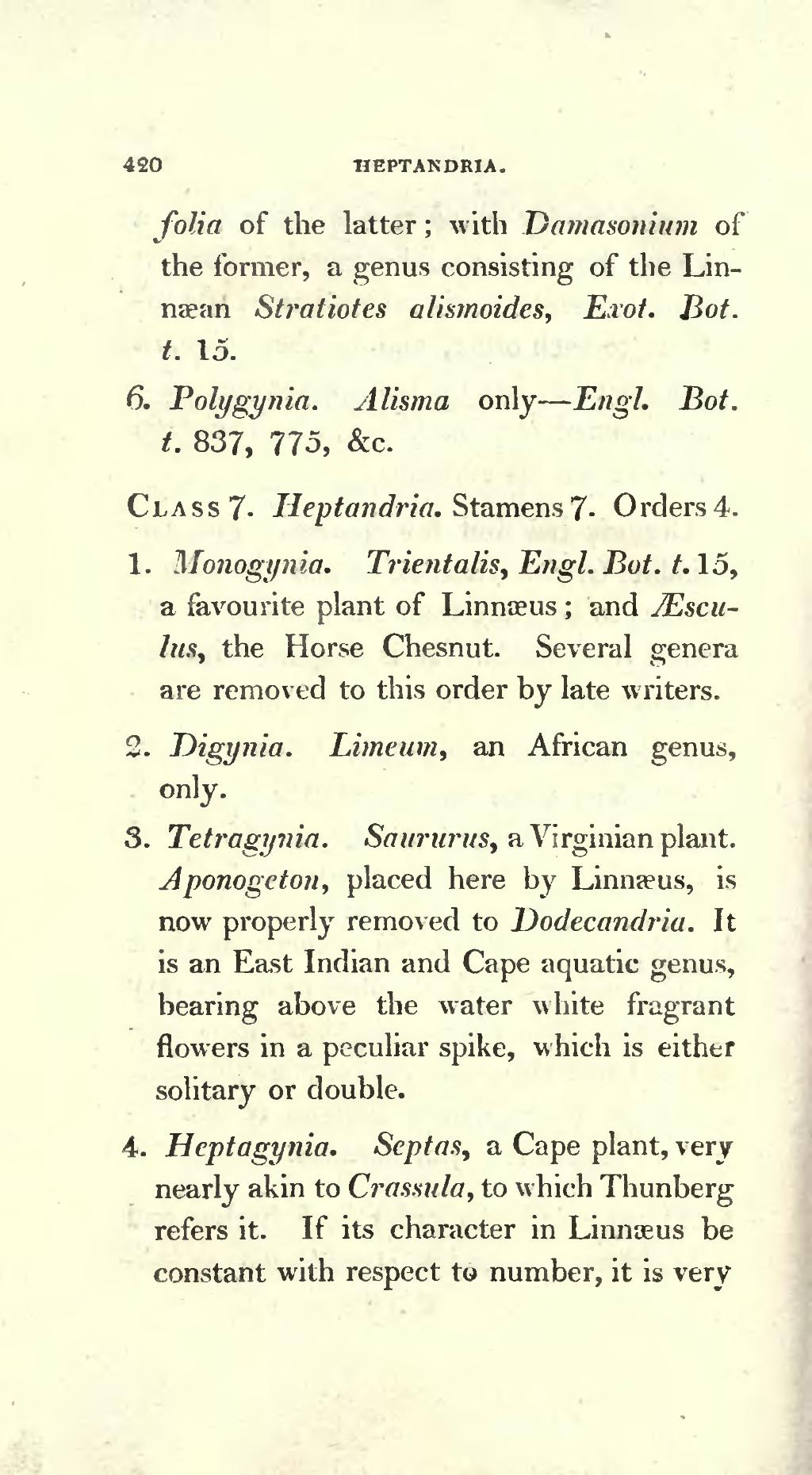folia of the latter; with Damasonium of the former, a genus consisting of the Linnæan Stratiotes alismoides, Exot. Bot. t. 15.
6. Polygynia. Alisma only—Engl. Bot. t. 837, 775, &c.
Class 7. Heptandria. Stamens 7. Orders 4.
1. Monogynia. Trientalis, Engl. Bot. t. 15, a favourite plant of Linnæus; and Æsculus, the Horse Chesnut. Several genera are removed to this order by late writers.
2. Digynia. Limeum, an African genus, only.
3. Tetragynia. Saururus, a Virginian plant. Aponogeton, placed here by Linnæus, is now properly removed to Dodecandria. It is an East Indian and Cape aquatic genus, bearing above the water white fragrant flowers in a peculiar spike, which is either solitary or double.
4. Heptagynia. Septas, a Cape plant, very nearly akin to Crassula, to which Thunberg refers it. If its character in Linnæus be constant with respect to number, it is very
